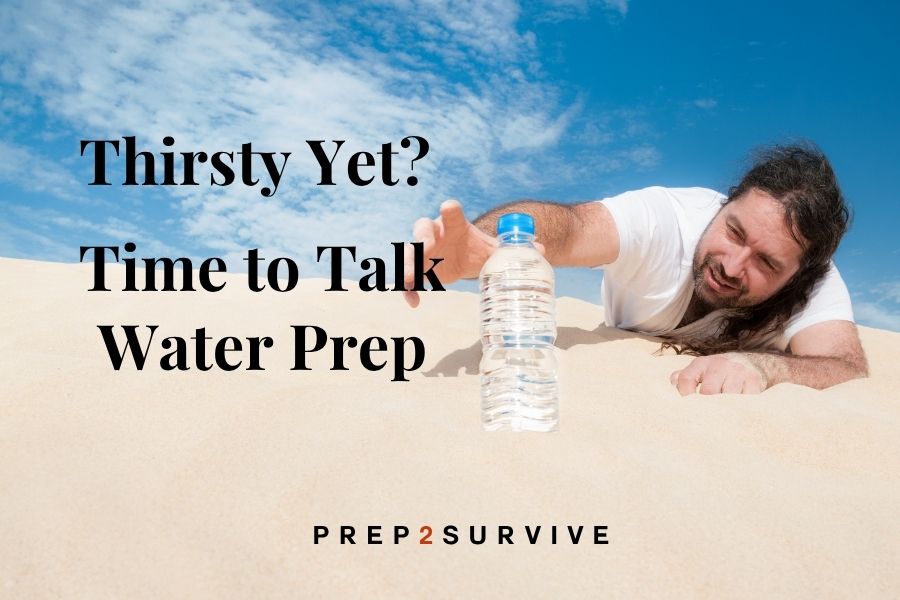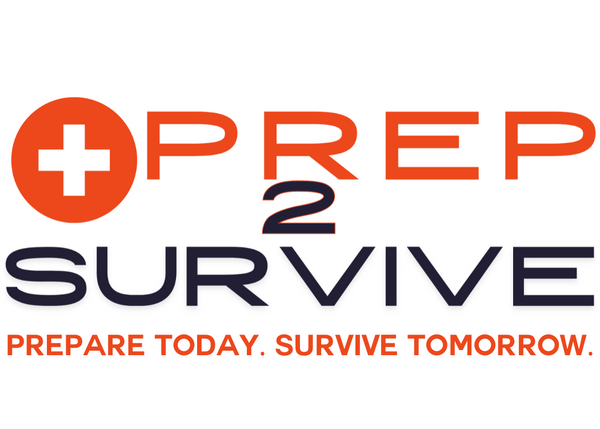
💧Are You Ready If the Tap Runs Dry?
At Prep2Survive, we believe most people don’t realize just how fragile our water supply really is. We assume that when we turn on the faucet, clean, safe water will always be there. Recently, The Department of Health and Human Services is directing the Centers for Disease Control and Prevention to make new recommendations on the addition of fluoride to U.S. water sources. HHS Secretary Robert F. Kennedy Jr. has blamed the fluoridation of water for a number of health problems.
But the truth? A simple power outage can change that in an instant.
In fact, it already has.
In 2022, a power failure at a Texas water treatment facility caused the pressure to drop so much that contamination became a real risk. Overnight, nearly 2.2 million people were placed under a boil water advisory — lasting more than 36 hours — all because of a temporary blackout.
Now imagine what happens during bigger disasters:
Pipes burst in freezing temperatures
Wildfires fill the air (and water) with toxic chemicals
Massive storms wipe out infrastructure
There have even been cases where authorities warned:
“Only use water for survival needs.”
When that happens, knowing how to store and purify your own water isn’t just smart — it’s survival.
The good news? It’s simpler than you might think.
How Much Water Should You Store?
General Rule:
Plan for 1 gallon per person, per day — at a minimum — for at least 3 days.
But here at Prep2Survive, we recommend aiming higher: a two-week supply if you can manage it.
For a family of four, that’s about:
12 gallons for 3 days
56+ gallons for 2 weeks
Remember: Water isn’t just for drinking. You’ll need it for cooking, washing, basic hygiene — and your pets need their share, too.
Choosing the Right Containers
Not all water storage options are created equal. Some are great for emergencies — others could do more harm than good.
Good Options:
Commercial Bottled Water: Shelf life of 1–2 years. Easy but pricey and creates a lot of plastic waste. Good for backup, not your main plan.
Collapsible Water Containers (like our Prep2Survive 5-Gallon Water Containers): Sturdy, compact, and easy to store when not in use — perfect for smaller spaces or building a larger reserve without sacrificing living space.
Avoid: Milk Jugs. Tempting, but unsafe. They break down quickly and can hide dangerous bacteria even after cleaning.
How to Fill and Store Water Properly
Filling your containers the right way is critical.
Here’s our Prep2Survive quick checklist:
Wash containers with warm soap and water
Sanitize with a water-safe disinfectant
Rinse thoroughly
Fill with clean, municipal tap water
Add a quality water preserver if storing for more than 6 months
Label with the fill date.
IMPORTANT: Replace every 6 to 12 months (Don’t just “store it and forget it!”)
Emergency Water Purification Basics
Even with stored water, you need to know how to clean questionable sources when the need arises.
Boiling: Bring water to a rolling boil for 1 full minute (or 3 minutes if you’re above 6,500 feet elevation). Let it cool naturally.
Water Purification Tablets: A fast, packable solution for emergency kits. They purify in about 30 minutes.
Water Filters: Portable systems (or gravity-fed filters) can clean large amounts of water, removing bacteria, protozoa, and even viruses.
🎯Pro tip: Have multiple methods available. Redundancy saves lives.
Don’t Forget Water Rotation!
One of the biggest mistakes we see is families who “store it and forget it.”
Stay ahead: Mark each container with the date you filled it.
Set calendar reminders every few months to check and rotate your water.
Use the older water for plants, pets, or cleaning before refilling!
QUESTION: If a boil notice is suddenly announced, will you be ready?
🚨 Your Emergency Water Checklist
If authorities announce a boil water advisory, follow this action plan immediately:
✅ Stop using tap water for drinking, brushing teeth, prepping food, or making ice.
✅ Switch to your stored water supply right away.
✅ Use water purification tablets or emergency filters for any questionable water sources.
✅ Keep treated water in clean, tightly sealed containers.
✅ Use disposable dishes and utensils (no dishwashing — conserve water and avoid contamination).
✅ Supervise children and pets — make sure they don’t swallow water while bathing.
✅ Disable water-connected appliances like ice makers and refrigerator water dispensers.
✅ After the “all clear,” flush your system by running cold taps for at least 5 minutes.
Bonus Tip: Hidden Water Sources in Your Home
In a serious emergency, don’t forget you might already have extra water hiding inside your home:
🚿 Water heater tank (typically 30–60 gallons)
🧊 Ice cubes made before the water issue (melt and treat if needed)
🥫 Liquid from canned fruits and vegetables
🚽 Toilet tank water (ONLY from the back tank, and only if no chemical cleaners have been used)
Always purify these sources before drinking, using a trusted water filter or purification method.
Final Thought: Water is Your #1 Priority
At Prep2Survive, we believe being ready isn’t about living in fear — it’s about gaining confidence and peace of mind.
Water security is the foundation of every emergency plan. Whether you’re just starting your preparedness journey or leveling up your home’s defenses, acting now gives your family a true survival advantage when it matters most.
✅ Stock it.
✅ Purify it.
✅ Rotate it.
✅ Stay prepared.
